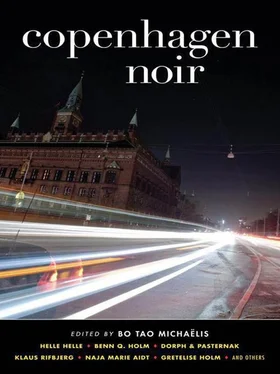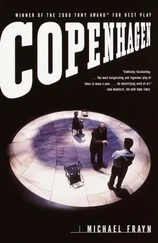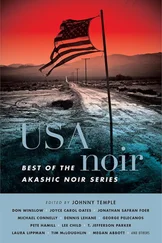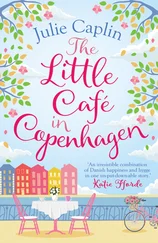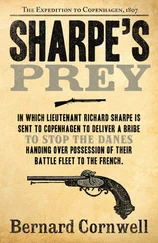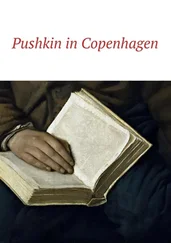COPENHAGEN NOIR
Edited by Bo Tao Michaëlis
Translated by Mark Kline
Copenhagen demands time.
— Dan Turèll

Copenhagen map by Aaron Petrovich
THE SEAMY SIDE OF MODERNISM
The French word for black is currently an often (mis) used trendy word for irrational and uncontrollable crime, a melodramatic, spectacular, and thrilling intrigue in an entertaining story that begins well but ends badly. The word gained this interpretation in the postwar world of the 1940s, after the launch of a French series of hard-boiled books, “Série Noire,” written by American, English, and French authors, from Dashiell Hammett to Cornell Woolrich and Raymond Chandler, to Georges Simenon and Léo Malet. Black on black, death never gives credit and life is short and dirty, like a kid’s shirt. Yet, what does noir mean nowadays with regards to concept, style, and genre?
Noir is the story of the fateful coincidence, the precarious absurdity and bitter nonchalance of life. It speaks of loss of control and lack of insight, of irrationality’s impact on what seems to make sense-the throw of the dice that didn’t win, to put it simply. The style is minimalistic, open, and terse. It attempts to describe an unpredictable calamity rather than any act of clear rationality. Capturing the murderer is neither what’s necessary nor important. Because noir is seldom interested in illuminating a valid truth or forming clarity, it rarely seeks a transparent understanding that it doesn’t believe in anyway. Noir is the crime genre’s bleak nostalgia and, at the same time, its unsentimental vision of modern times; without degenerating into cheap puritanism or bigoted abstinence, it often includes sexuality, and more in the light of being used destructively than as any romantic idealism. A noir story seldom has a happy ending. When it does happen, such as in Chandler’s Philip Marlowe books, it is with a bittersweet taste of compromise or bargaining. Life goes on with a wounded soul, and only that which is lost is eternal. Past, present, and future melt into one synchronous now, which cancels out every hope that times change and things will be better. As a famous title from a noir writer, Horace McCoy, puts it: kiss tomorrow goodbye, because nothing will be there at daybreak.
Noir is disillusionment and melancholy in relation to the big city, the melting pot of modernism. Some classic noir stories do take place in the country, but the metropolis appears either as modernism’s revenge or as temptations fallen for in the past that now must be paid for; it often involves cold revenge, heated confrontation, old love, or as all three at the same time and place.
The most archetypical noir short story is Ernest Hemingway’s “The Killers,” originally published in Scribner’s in 1927. Two hit men arrive in a country town to shoot a newcomer with a big-city past. It doesn’t happen, they don’t find him that day, but as the narration progresses, we readers know from reading between the lines that it is only a question of time before the killing takes place. Such is life in noir—you can’t avoid your fate; at the most you can delay it and hope that death comes quickly and relatively painlessly as the long sleep that we all must enter at some given point in our lives.
Noir loves flight, ill-fated love, the cold avenger. You could say that Alexander Dumas’s classic novel of revenge from 1844, The Count of Monte Cristo , is the first noir novel, with its lengthy and cold-blooded reprisal that can be traced back to the main character’s disadvantaged, unfair, and virtually psychopathic past. Others identify Greek tragedy, with its gruesome destinies and lack of redeeming Providence, as the oldest forerunner of the genre.
No matter. The important point is that noir only seems to operate within the crime genre. There is noir that merely touches occasionally on an actual crime story; Paul Auster’s novels about New York come to mind, but authors from other genres and other parts of the globe can also be included. Japan’s Haruki Murakami, England’s Ian McEwan, and Sweden’s Karin Alvtegen all can be said to create works resembling noir. The dark style does not require bodies, pathetic sex, or cover-tocover violence. More a clear literary, late-modernist, and existential sense that in the evil streets of the big city and dark suburbs is found the consummate experience of shock-the confrontation with the seamy side of modernism.
Europe’s End and the Gateway to Scandinavia: Copenhagen as Noir
Copenhagen: the Little Mermaid, H.C. Andersen, Søren Kierkegaard, and Karen Blixen, a big city that perhaps more than any other is the absolute capital, origin, and center of northern European romanticism of the 1800s. Denmark’s Copenhagen, with its ramparts and moats forming the shell of the city and suburbs, has retained a glint of back then, that world of yesterday. To be exact, the city’s archaic Middle Ages center, with the beautiful buildings, squares, and streets that tourists meet from their hotels, a comfortable inner circle with Tivoli as its midpoint and King’s Square its end. At one point our metropolis was presented as an idyllic, modest-sized big city, where police stopped traffic when a mother duck guided her ugly ducklings across the street populated by cars, bicycles, and streetcars. But naturally, and quite unfortunately, such is the case no longer. Copenhagen long ago abandoned its Sleeping Beauty slumber for a cosmopolitan night and day that never sleeps, neither in a good nor bad way. Four-wheel drive vehicles, limos, and expensive sports cars now sail down the boulevards and avenues that were once characterized by girls bicycling on dirt paths and healthy boys briskly walking to work or to girlfriends. Those times are gone forever.
The main character of Naja Marie Aidt’s noir story, “Women in Copenhagen,” returns to the city after seventeen years and realizes that the place has become more multicultural, turbulent, and global than the Brooklyn where he lives. Everything is in flux, in a variety of colors. Gone is the provincial city appointed as capital; instead, one is confronted with a metropolis where the food is from the Middle East, the wine from California, the women from Africa, and the mafia from Russia. Mafia! A new word at these latitudes, where crime formerly took place among bands identified with city neighborhoods and regions. Beatings were bloody noses from a few punches, not like now with knifings and shotgun blasts in the gut and an unmarked grave out in the sticks or under the deep blue sea. Between the wars, in the 1930s, we in Denmark spoke of “white slavery,” poor women kidnapped to a life of prostitution in foreign brothels-today it’s called trafficking, and now we speak of the vile import of East European women. And moreover, we are indeed the last country in Scandinavia to criminalize the customer of such activity, the buying of a hooker.
The short stories in Copenhagen Noir deal often with this phenomenon, the introduction of women from the outside-often the third world-to our own little den of capitalist lust, to abuse them. Our northern nation, where Europe ends and Scandinavia begins, and which time and again boasts of its romantic lifestyle and puritanical decency in song, in verses concerning our mellow nature, our hale and hearty men and gentle women. This anthology articulates with skill and resolve the dark side of our romantic identity depicted by our nineteenth-century golden-age literature and contemporary hits on radio and TV, rhyming on love and pain. Here we see the modernist noir, linked to organized prostitution run by criminals from outside our borders. This is a different Copenhagen from what the still lifes suggest in tourist brochures.
Читать дальше
